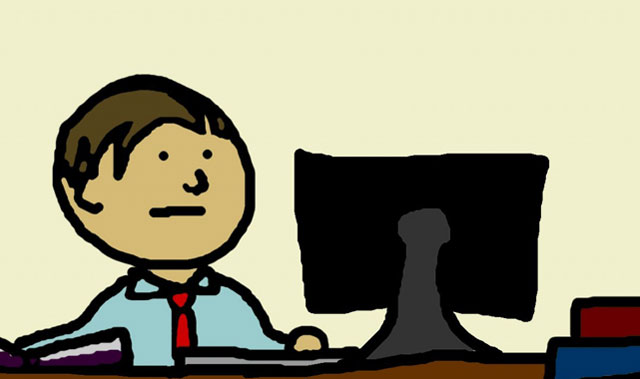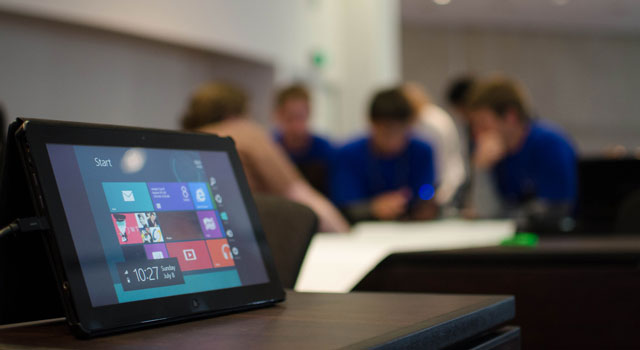
The man who runs state education in South Africa’s richest province has no time for old-fashioned classroom accessories. In January, Panyaza Lesufi, who heads the education portfolio in Gauteng, told journalists at Boitumelong Secondary School just outside Johannesburg:
I’m signing the death warrant of the chalk, duster and chalkboard in Gauteng. We are moving on with the times and we are moving to better things.
Lesufi was at the school to promote the Big Switch On pilot, a project in which pupils are given tablets loaded with textbooks and their schools receive interactive whiteboards. “You will never accuse me of failure to deliver textbooks,” he said. “You will now accuse me of failure to download.”
But is making technology available to schools without adapting curricula or teaching methods to a digital platform actually worthwhile?
According to John Hedberg from the Australian Centre for Educational Studies, e-learning can only be successful if there is a “revolutionary move away from replicating traditional classroom-based teaching practices”.
At the heart of Hedberg’s critique is the idea of skeuomorphism, which is keeping the form of the old but discarding its function. Think of smart phone cameras that “click” like a DSLR camera or pages in an e-book reader that “curl” as they are turned — just like a paper book. Thanks to Hollywood star Tom Hanks you can even make your laptop’s keyboard sound like a quaint old typewriter.
Technology giants like Apple, Google and Microsoft have all used skeuomorphic designs to soften the transition from old technologies to new.
These features don’t have any functional value but their resemblance to forms of the past gives users a sense of comfort and familiarity.
Tablets and smart whiteboards won’t magically make pupils smarter unless teachers know how to use the devices properly and in a way that encourages learning. When Brandon Martinez and his colleagues from the University of Southern California started training teachers to use educational technology, they looked to the aviation industry for inspiration. Writing about their experiences, Martinez said:
To increase instructor skills, we borrowed a technique from airline pilot training — simulators. Teaching in a virtual classroom requires knowing the basics of the technology and being ready to adjust … We watched each other teach and practised new approaches, testing what captured student interest.
In 2011, Clintondale High School in Michigan became the global poster child for “flipped” classrooms. This is an exciting example of how educational technology can change teaching and learning if it is properly used and doesn’t just become a copy-paste substitute for old methods.
A flipped classroom inverts traditional teaching methods. “Lectures” happen after hours, usually at home — students watch instructional videos at their own pace.
During formal class time, students are given activities that help them engage with concepts. Rather than just standing in front of the class and reading from a textbook or tablet — what some theorists call the “sage on the stage” model — teachers become “guides on the side”, available to answer questions and lead discussions.
Clintondale High’s combination of new technology and radically different teaching methods has pushed up its pass rates, improved discipline and seen more of its students securing college places.
The educational technology boom isn’t limited to the developed world. It is growing rapidly in countries like India and Brazil. If teachers are exposed to new digital teaching approaches, and given the space to experiment with technology, we can begin to produce a whole new generation of pupils: those who think and create and not those who just sit in classrooms waiting to be told what they should do or know.

In August 2013, the Los Angeles Unified School District launched a US$1bn project designed to make its schools high-tech havens. A month later, officials discovered that nearly 300 students at one high school had hacked through security and were using their district-issued iPads to surf the Web rather than study.
Then, in April 2015, it emerged that a digital curriculum developed by publishers Pearson and loaded onto pupils’ iPads as part of the district’s ambitious project was simply “unusable”. Critics complained that the project had been rushed from conception to execution far too quickly and without any proper planning.
Why wasn’t the technology pre-tested by the teachers who were expected to use it every day? Technology companies may understand the mechanics of their products, but it’s teachers who understand teaching and who must be involved in making those products more than just electronic white elephants in the classroom.![]()
- Craig Blewett is senior lecturer in education and technology at the University of KwaZulu-Natal
- This article was originally published on The Conversation




